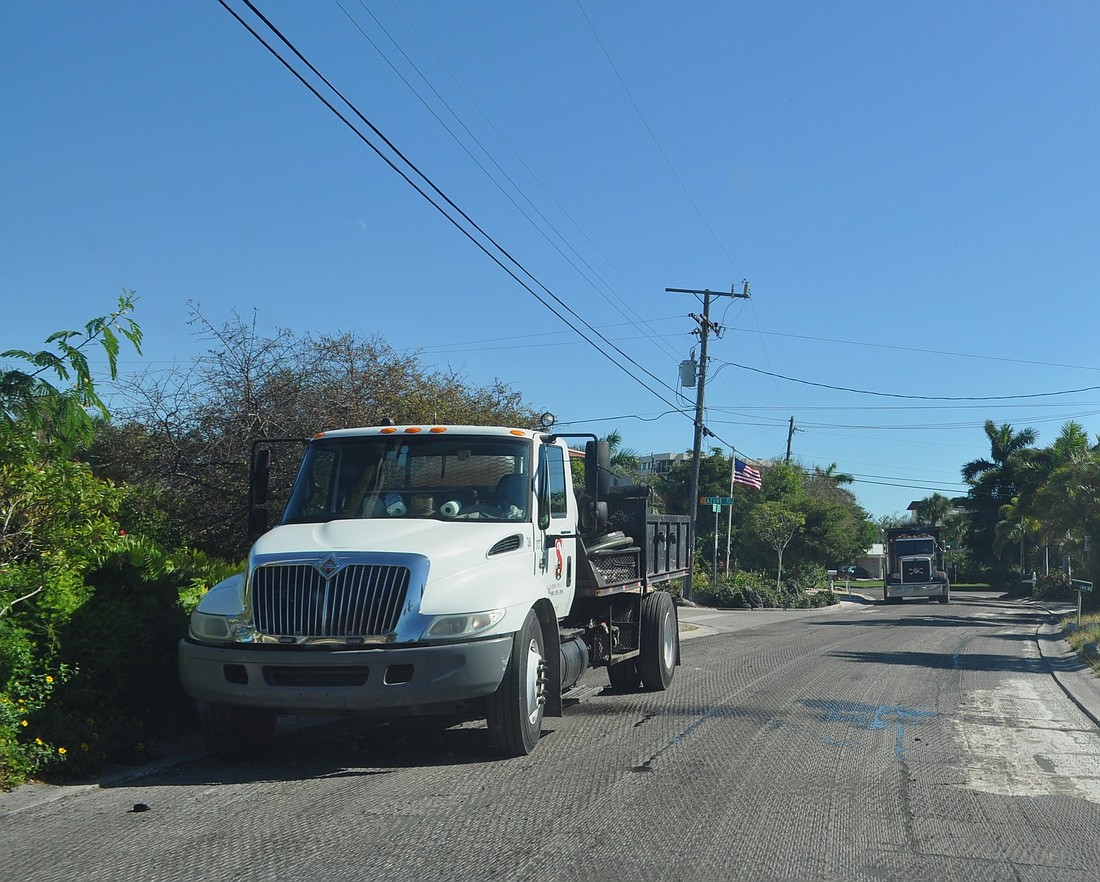- April 18, 2024
-
-
Loading

Loading

The Florida Department of Transportation wants to get rid of a Siesta Key road.
The agency pays $1.8 million to maintain roads in Sarasota County, and as a non-connected state road, Midnight Pass is a prime candidate for the state to shed, according to Sarasota County Traffic Engineering and Operations staff member Ryan Montague.
If the county accepts the stretch of road, which snakes from the Siesta Key north bridge to Stickney Point Road, it will add operation and maintenance costs to the county.
Sarasota County Administrator Randall Reid and County Commissioner Nora Patterson, a Siesta resident, said in a December email chain they would oppose taking ownership of the road, which would also give the county oversight of its speed limit.

“That would lower their expenses and raise ours, so I can understand why they would want to do it,” Patterson said in a phone interview with the Pelican Press.
The county slashed the programmed surtax money budgeted for road re-paving projects by more than $60 million. The amount of miles of re-paving $1 million will buy has fallen from about 50 miles to 15 miles, according to a 2012 budget workshop presentation from Sarasota County General Manager of Business Operations Tom Maroney.
Commissioners will have the option to cut road impact fees, building fees that pay for the construction of new roadways, by two-thirds this year.
County staff estimates 40% of area roads are in an undesirable condition, but infrastructure isn’t the only transportation woe the county faces in 2013.
Sixty percent of Sarasota County Area Transit’s fixed-route buses are at, or past, their serviceable life, and there is an estimated $7 million deficit in SCAT’s five-year bus-replacement program, according to a report prepared by SCAT General Manager Glama Carter.
The retirement of Sarasota County Traffic Engineering Operations Manager Efrain Duque and the departure of county professional engineer Chris Hauber added holes in the county’s mobility department and further uncertainty to the county’s overall transportation outlook in 2013.

Search for savings
County Engineer Jim Harriott, during a 2012 budget workshop, outlined cost-saving techniques for the county’s re-paving program, which includes a technique called micro-resurfacing.
County-hired contractors would fill in cracks in the surface of roadway asphalt as part of this method, which extends its lifespan by as much as 10 years.
But, the result is a “loud” roadway that is rough on the wheels of strollers or roller blades, Harriott explained.
The county just finished a major resurfacing project in Siesta Isles and is repaving and replacing sidewalks in the Gulf Gate area through April, according to the county’s “ConeZone” website feature.
But, there are still stretches of road on Siesta that fall below the staff-deemed acceptable overall condition index rating of 60, including 1.5 miles of Midnight Pass Road from Shadow Lawn Way to Higel Avenue, which is currently state-owned, and about a mile of Higel Avenue.
The county uses a mix of grants, the penny sales tax and gas taxes to fund resurfacing projects.

Early this year, SCAT will pitch to county commissioners a plan to buy 17 clean diesel buses, instead of hybrid vehicles, which would save $200,000 per bus.
The $6.7 million purchase includes $6,100 each to wrap five of the buses to look like trolleys.
By using a “trolley skin” instead of an actual trolley kit that expands windows and adds various hard trolley features, the county saves more than $50,000 per bus, according to Carter’s report.
Contact Alex Mahadevan at [email protected].
_____________________________________________________________________________________________
NARROW FUNDING FOR WATERWAY TRANSIT
Sarasota County organizations and agencies that apply for grants from the West Coast Inland Navigation District in 2013 will have to be more budget-minded.
The county has used much of its reserves earmarked for waterway projects as requests, particularly from law-enforcement agencies, have grown, explained Sarasota County Commissioner Nora Patterson, during a Dec. 11 presentation from the Waterways Advisory Council.
“As law enforcement became extremely stretched with funding, they have put more aggressive projects into requests for funding with the WCIND,” Patterson said.
The organization funds and oversees permitting for projects to help make waterways more navigable, such as dredge-and-fill operations and seawall repairs. Funding comes from a small additional property tax, which county commissioners unanimously deferred to look at increasing.
“Nobody has an appetite for that now,” said County Commission Chairwoman Christine Robinson.
The special taxing entity’s annual revenues fell 38% from 2007 to $5.7 million in 2011, and it spent 11% more in 2011 compared with four years earlier, according to the Florida Department of Financial Services.
Siesta Key, Lido Key and Casey Key, as well as various inlets along the coast of Sarasota County, have winding canal channels for homeowners with boats to reach the Intracoastal Waterway, explained Sarasota County Waterways Advisory Council board member Allan Worms during a Dec. 11 County Commission meeting.